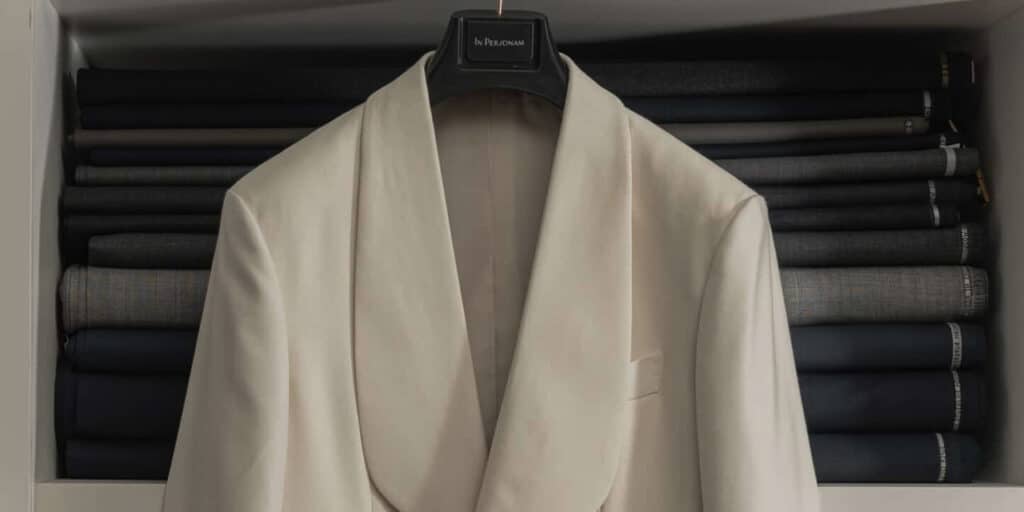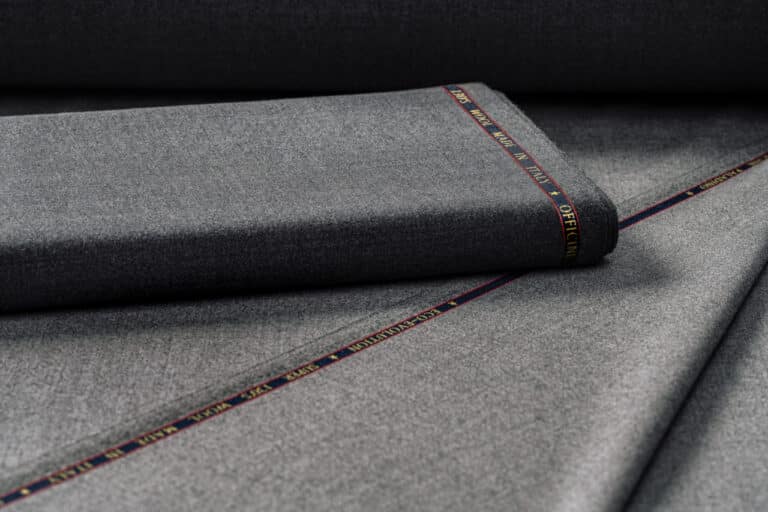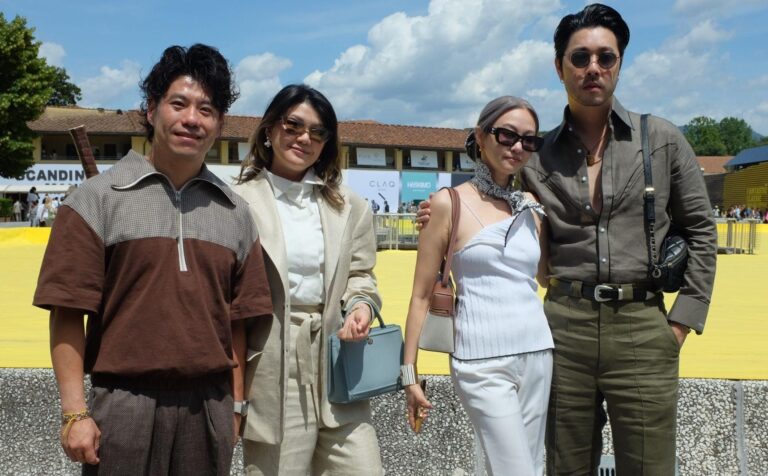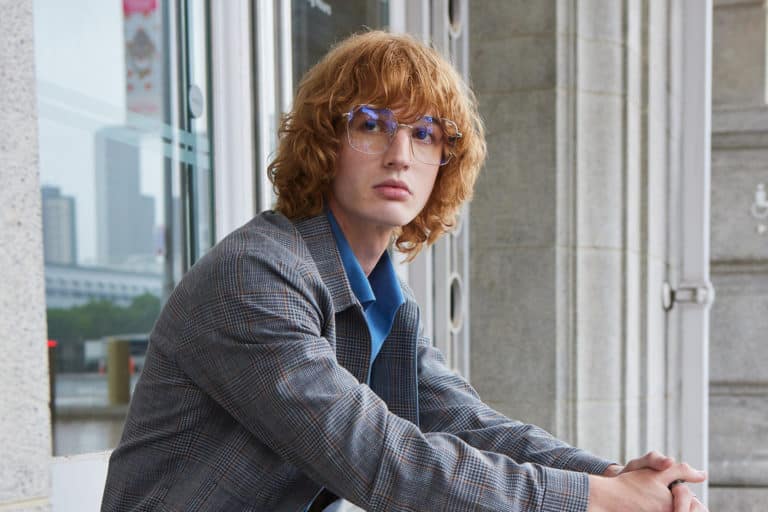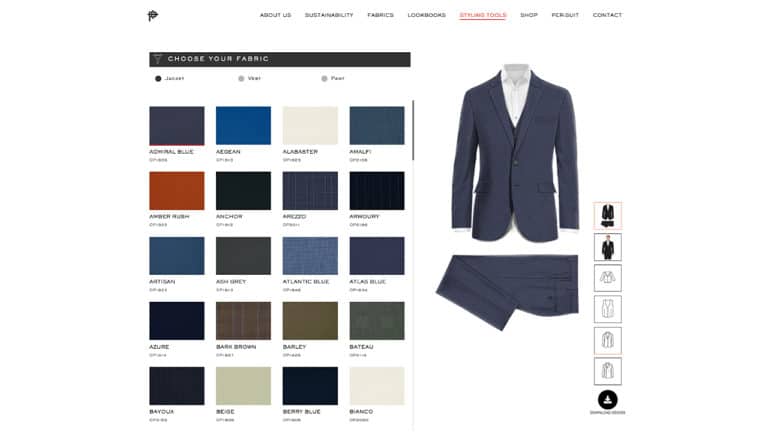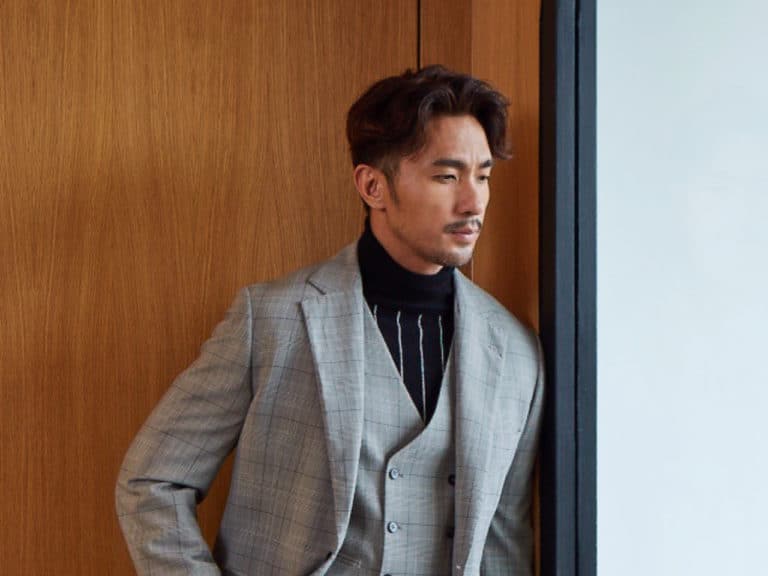Partners in business and in life, Samuel Ng, the founder of In Personam, and Julianne Tan, the creative force behind Sub Rosa, explore the differences between tailoring women and men.
“When it comes to menswear, the rules around fit are generally well-established,” says Samuel Ng, reformed lawyer and founder of Singaporean tailoring atelier, In Personam. “There might be stylistic differences, but guys tend to have a clear idea of how the shoulders should look, how long the jacket should be, and so on.”
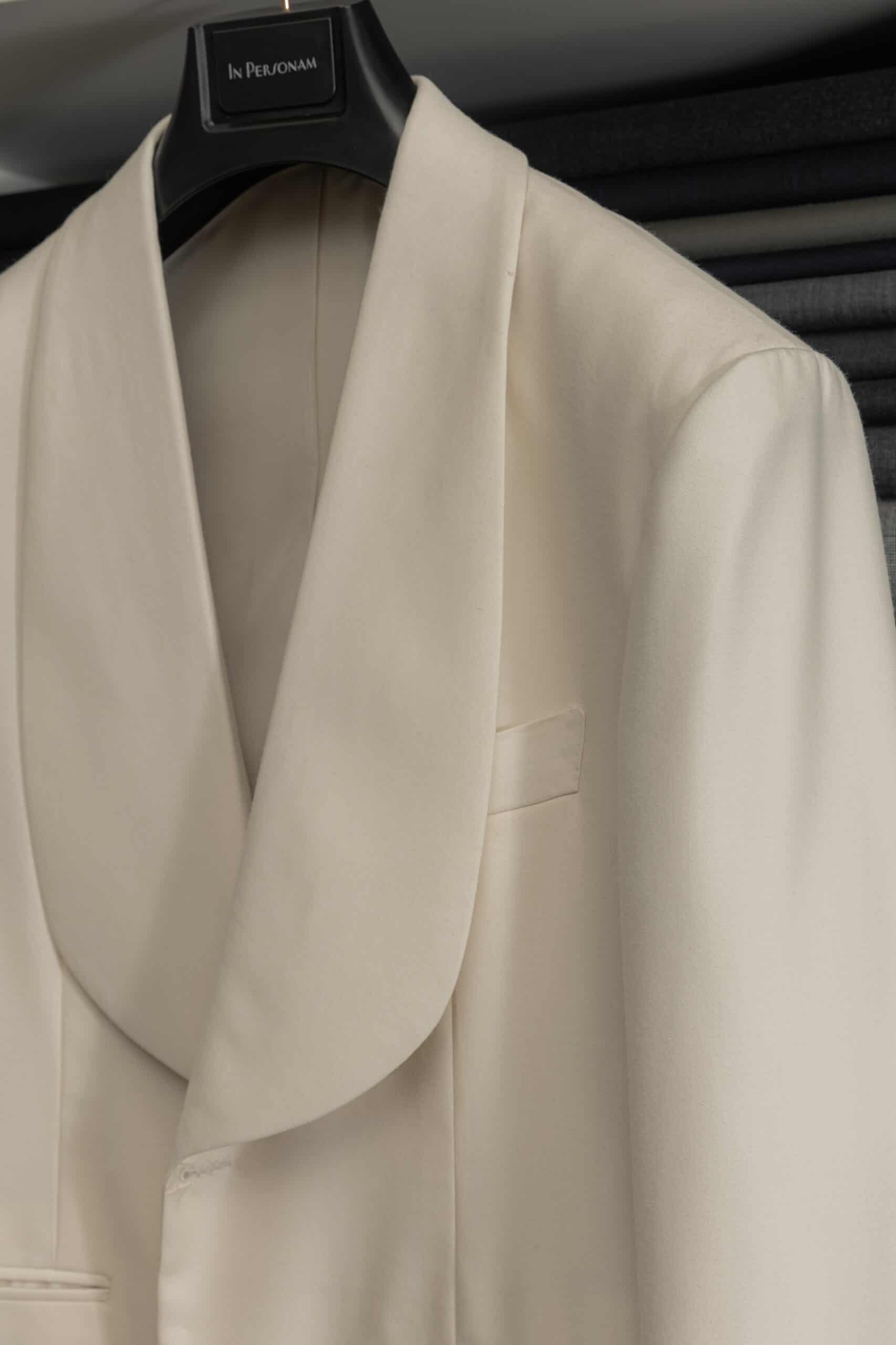
Here’s looking at you: An ivory dinner jacket with shawl lapel, reminiscent of Humphrey Bogart’s in Casablanca, tailored for a female customer’s wedding. The cloth, OP2050 ‘Bianco’, is “an excellent option for evening wear. It feels springy in the hand; the natural elasticity really helps with the drape,” Samuel says.
“I wouldn’t say it’s more design-led,” Samuel notes, “but it’s equally about design and fit.” The challenge lies in the complexity of the female form, with curves that require a more nuanced approach than what traditional menswear techniques can offer. “You can’t use the same methods for bust, waist, and hips,” he explains.
“A full-canvas suit for a woman, for instance, demands a great deal more work to shape the fabric around curves, whereas men are a lot more straight up-and-down.”
In menswear, trends and taste might dictate changes in lapel width or button count, but the core idea of what constitutes good fit and form remains largely constant. For women’s tailoring, the formula changes.
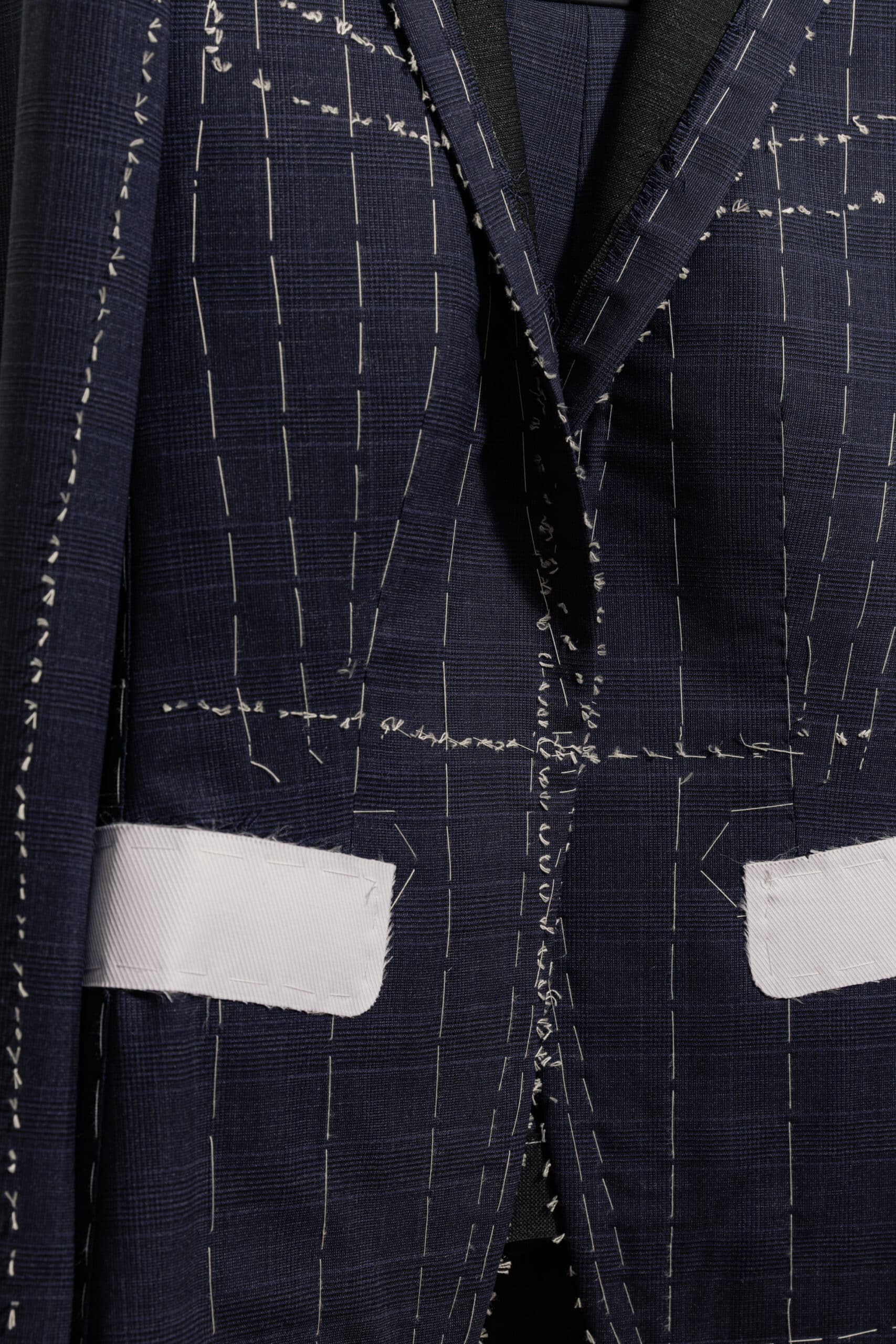
All about that baste: Samuel Ng of In Personam believes there are many differences between tailoring for men and women, both technically and in terms of style and cloth choices.
Julianne Tan, Samuel’s partner in business and in life, who heads up women’s custom clothier Sub Rosa, says she often reminds Ng that sometimes, he has to “let go of what’s accepted in menswear.”
She points out something as simple as pick stitching on a lapel — while functional and prized in menswear, flourishes like these don’t always resonate with women. “Women might not like it aesthetically,” she says. “It’s important to check in with clients on these details.”
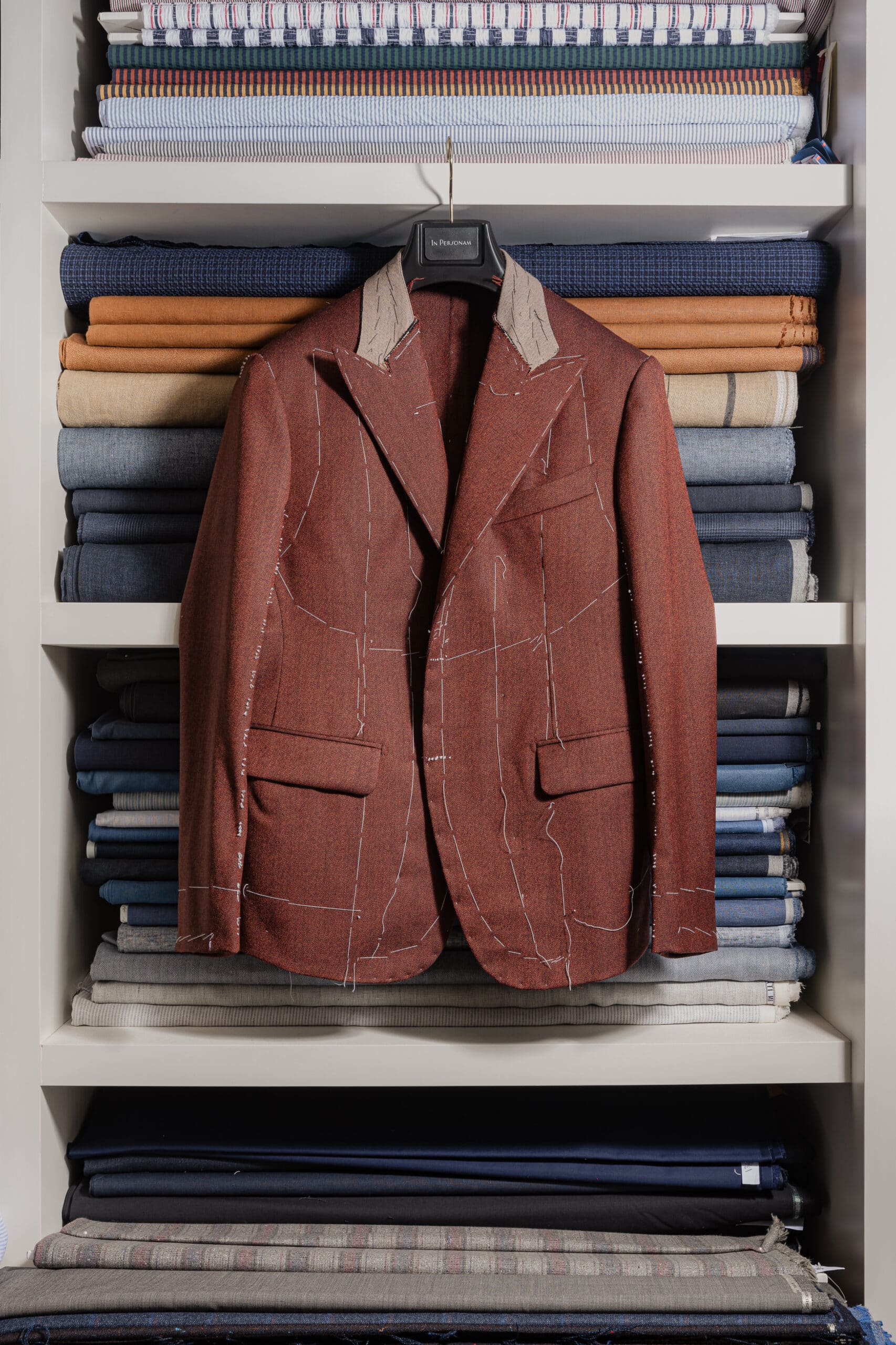
Men’s tailoring tends to adhere to certain guidelines, Samuel says. “The rules around fit are generally well-established,” he notes.
Samuel takes immense care to flatter the proportions of In Personam’s female clients. “He’s made numerous jackets for me,” Julianne says. “He highlights the curves but constantly considers how much room to add and where it should be more fitted,” she observes.
The differences between menswear and womenswear are particularly noticeable in clients’ choice of cloth type, colour and pattern. Men frequently seek versatility, gravitating toward traditional navy and grey, which can be worn in different settings, over and again, offering good return on investment. Female clients, meanwhile, relish the freedom to experiment.
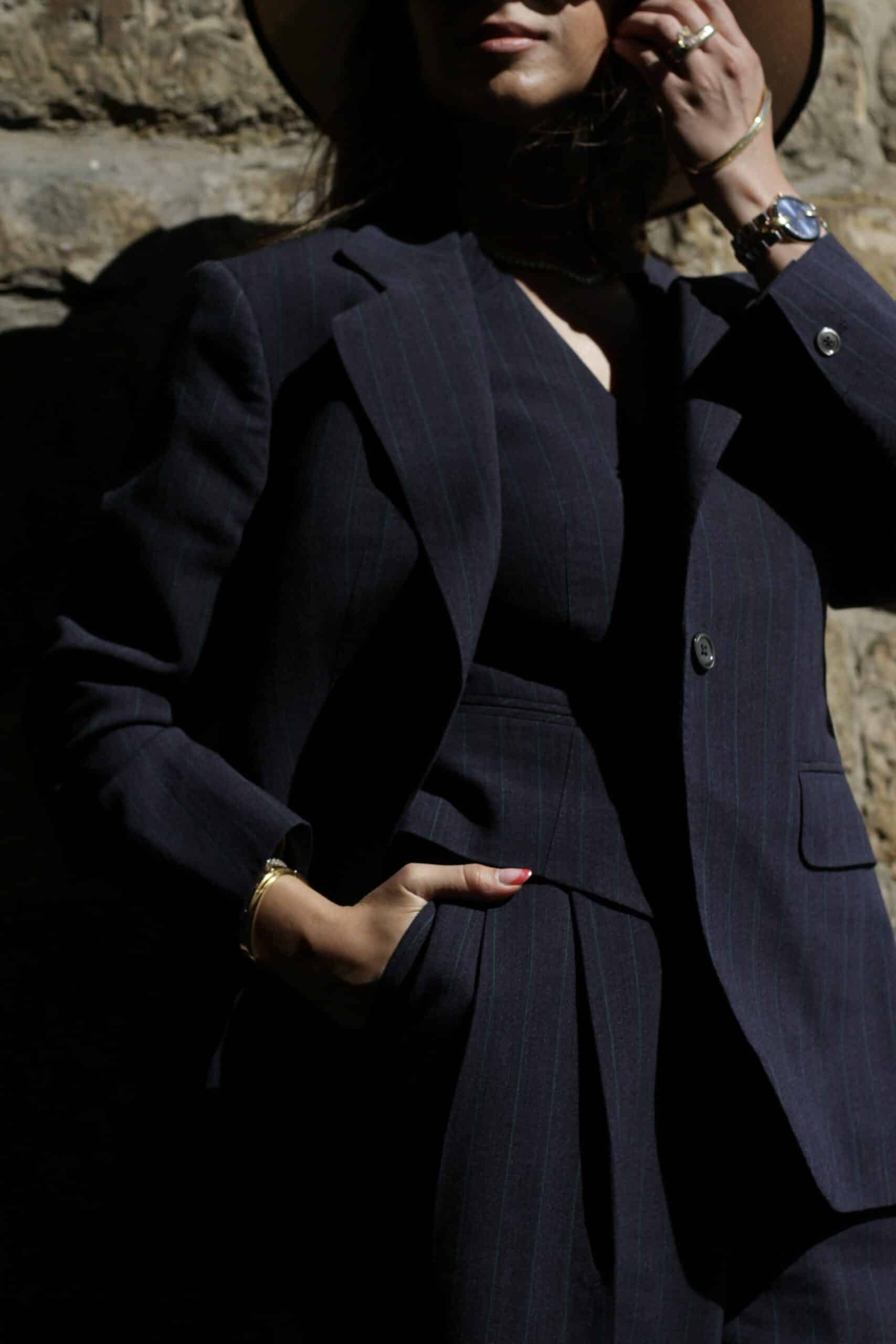
Ladies can be more adventurous in their cloth choices, selecting extraordinary materials such as this green-striped cloth: OP2101 ‘Blarney Stone’. Samuel describes this as “a very lightweight twisted wool with good crease recovery.”
“Women don’t have the same concerns,” Samuel says. “They can choose bold patterns and colours. Whereas men often look at a cloth and say, ‘Oh, that’s beautiful, but it’s not for me.’”
This creative freedom came into play when Samuel worked with Henna Advani, the wife of Officine Paladino founder Vishal, to create ensembles for Henna to wear at Pitti Uomo in June. Together, they dreamed up two standout outfits: a three-piece suit in blue with subtle green pinstripes (OP2101 Blarney Stone), and skirt suit in tweed.
“It was a real pleasure working with Henna, as she’s obviously someone who’s immersed in the sartorial world,” Samuel notes. “She was open to exploring new ideas.”
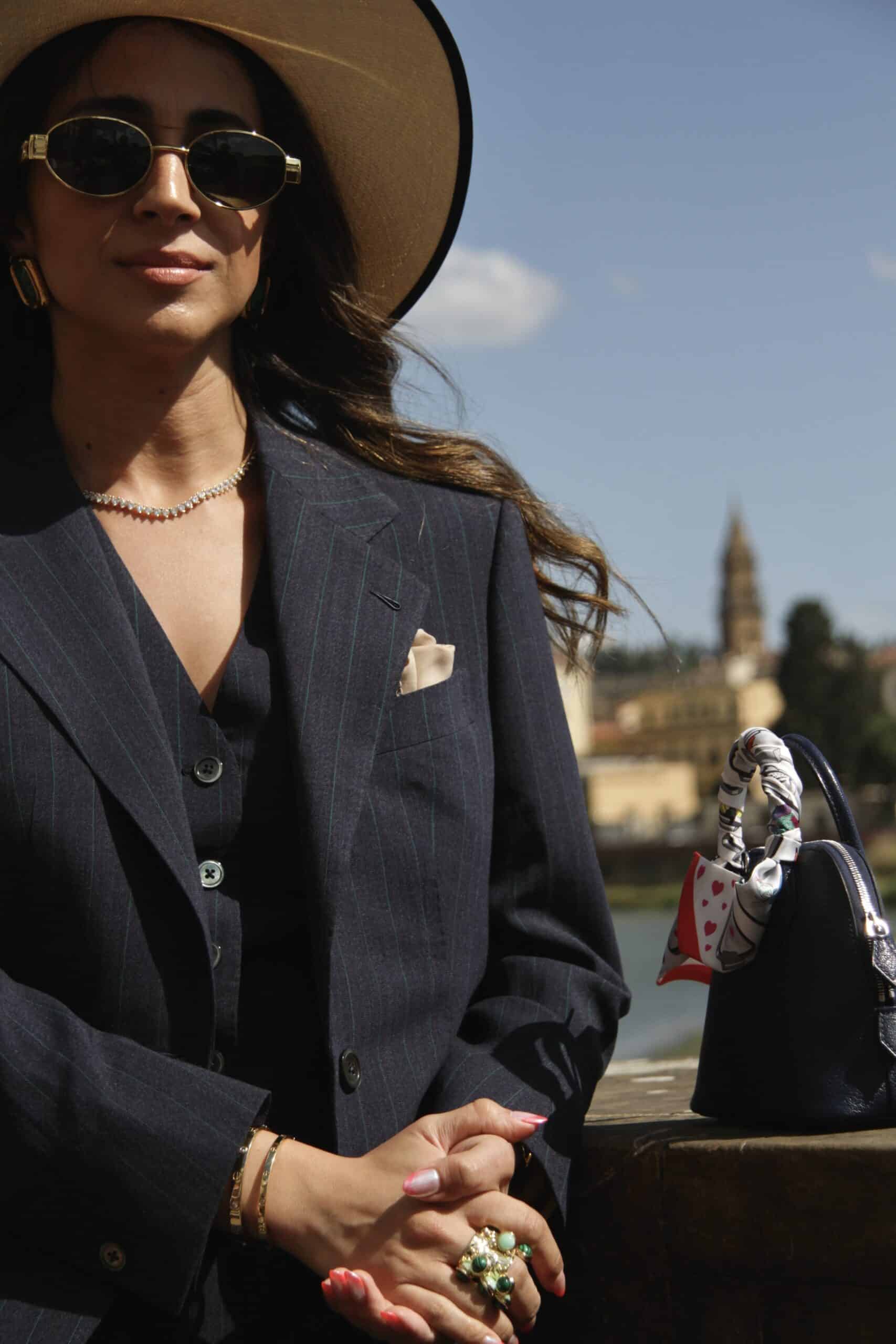
Working on this three-piece suit with Henna Advani, wife of Officine Paladino founder Vishal, was a pleasure, Samuel says.
One of the highlights of that collaboration was the oversized influence of the suit. The jacket and trousers were intentionally roomy, while the waistcoat served as a fitted top. “The key is to create a silhouette that feels comfortable and looks intentional,” Samuel explains, “not like she’s wearing her husband’s suit.”
It’s a fine line, and one that requires both expertise and intuition to execute correctly.
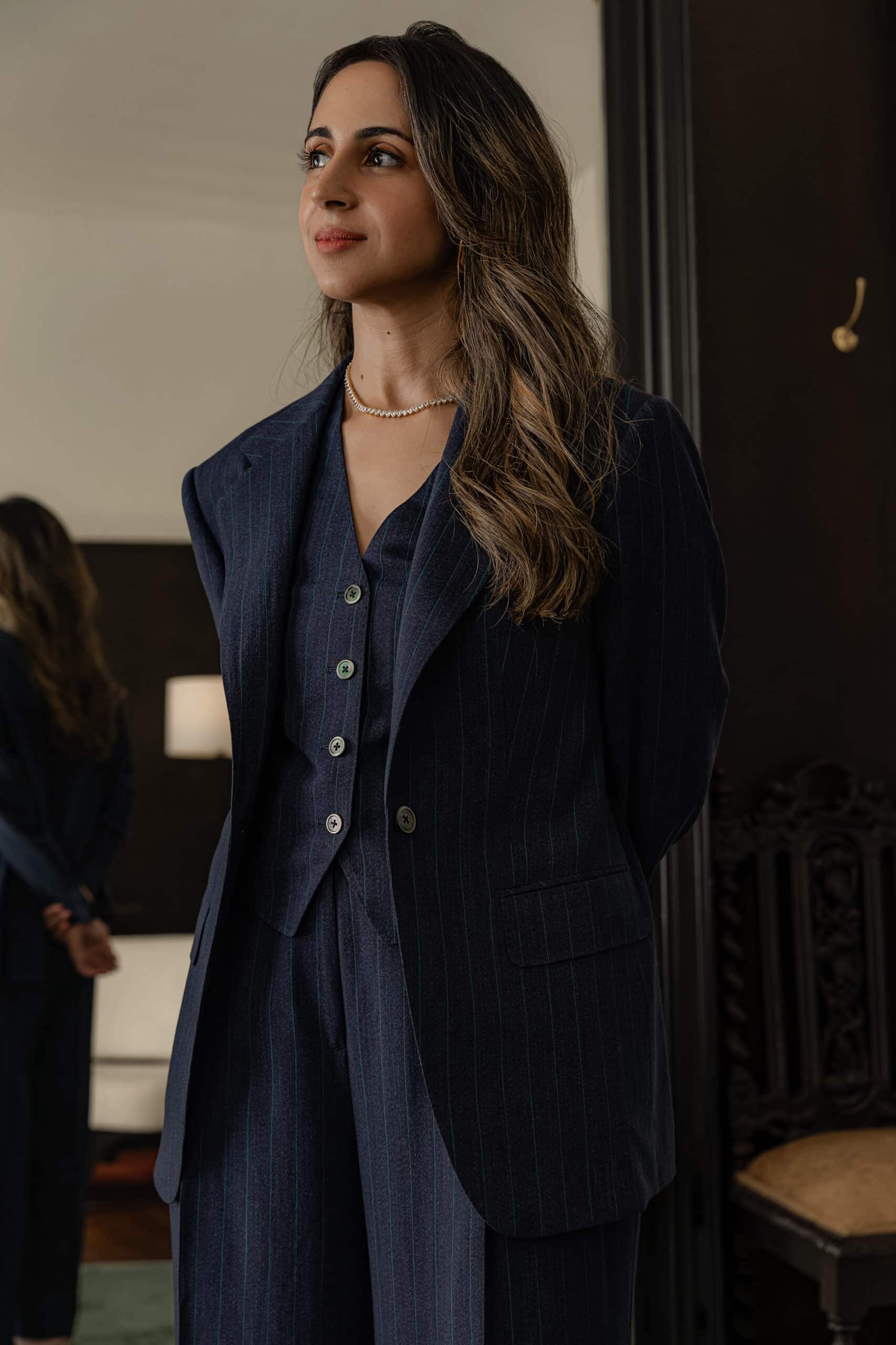
Henna during her final fitting with In Personam. The exaggerated fit of this three-piece suit required careful consideration of silhouette and proportion.
Female clients often seek cleaner lines. “They like the sharpness of menswear but still want it to be stylish in their own way,” Samuel says. Men might be fixated on details like whether a pleat faces inwards or outwards, while women are more conscious of the overall look and silhouette, Jules suggests.
For Samuel and Julianne, the creative process of commissioning a custom-tailored garment is deeply personal. Working by appointment only, they provide each client with their undivided attention.
“I can’t imagine working any other way,” Julianne says. “We’re very intentional about asking clients what they’re looking for, beyond just stylistic preferences.”
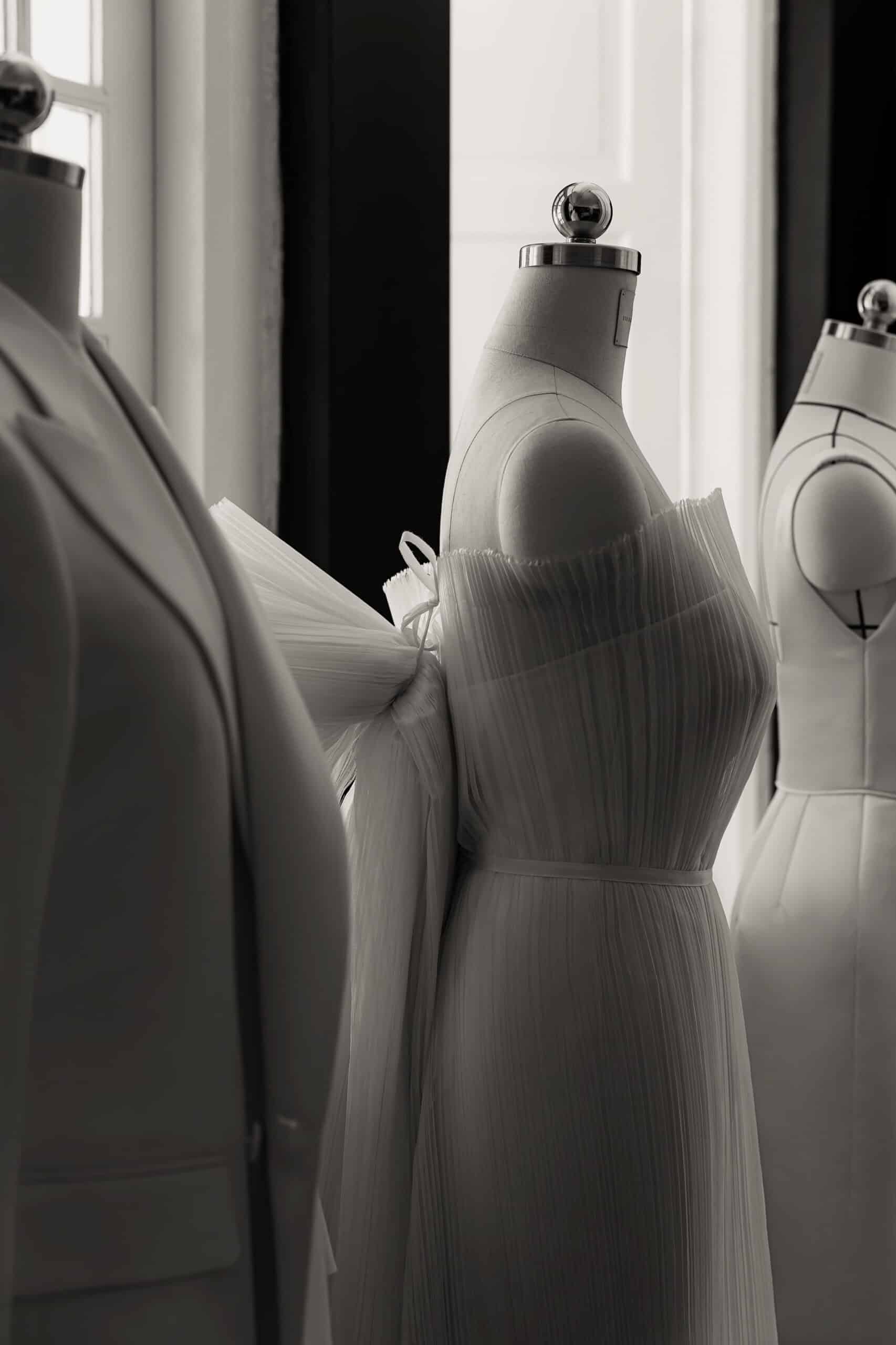
Yin and yang: In Personam and Sub Rosa can create custom garments spanning the spectrum from classic tailoring to elegant gowns.
Sam and Jules’ own stylistic preferences led them to eschew the stereotypical trappings of the bespoke tailoring atelier — whiskey, cigars, leather lounges and paintings of hunting scenes on the wall. Instead, they’ve set out to create a more relaxed, homely environment for their clients.
“What we offer is time and connection,” Julianne says. “That’s the real luxury.”
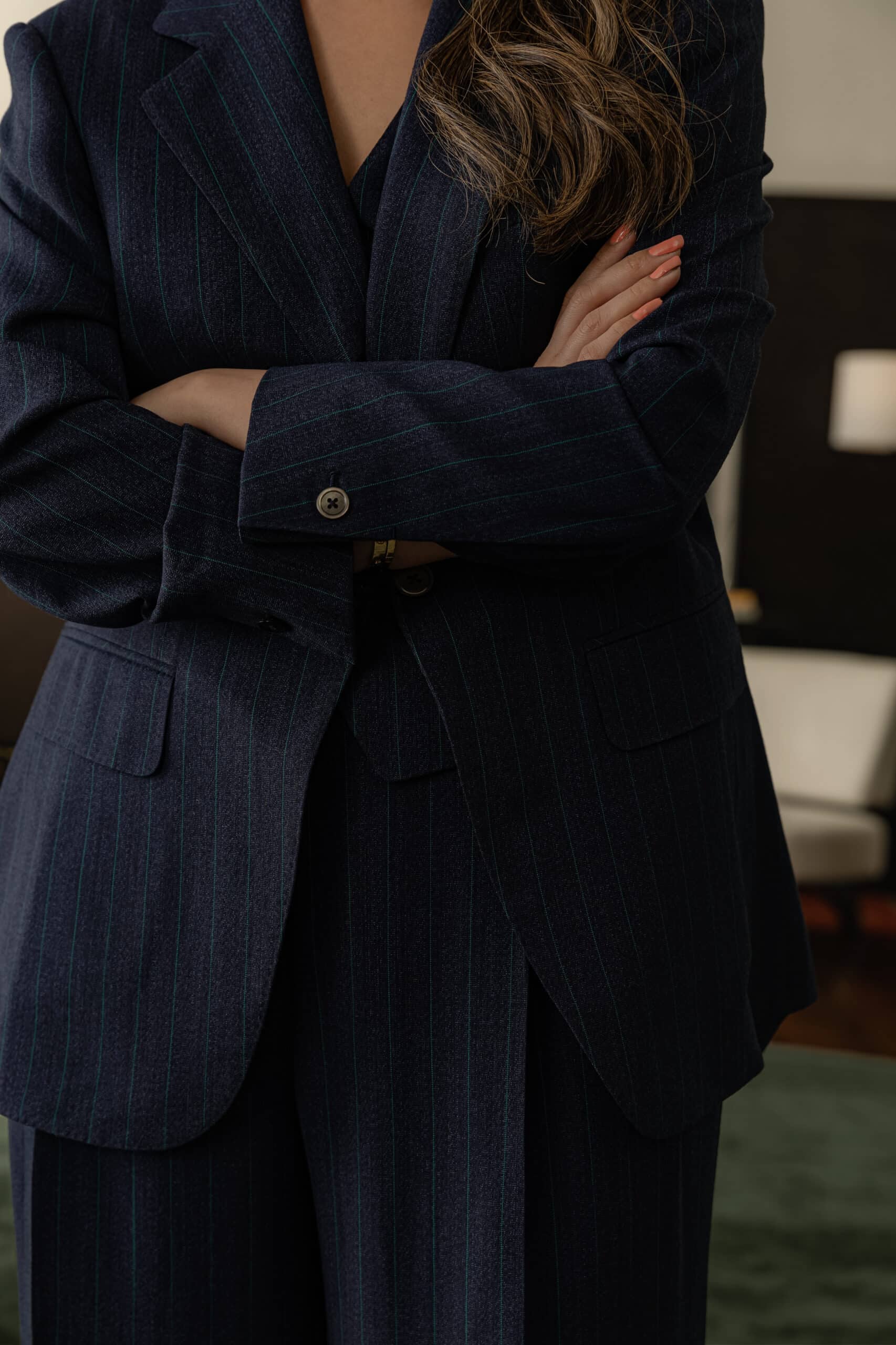
Henna in her In Personam three-piece, in OP2101 ‘Blarney Stone’. Note the clean single-button cuff.

